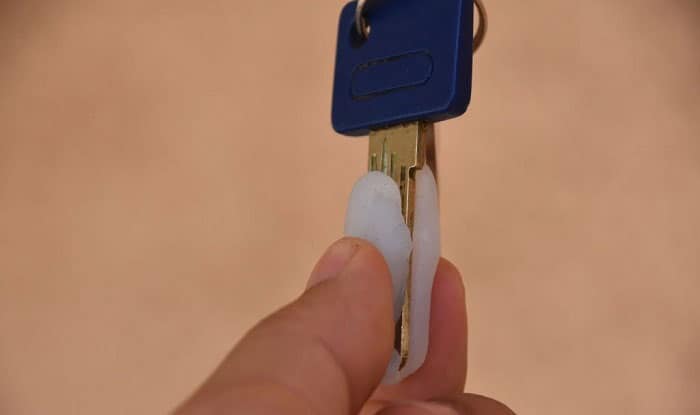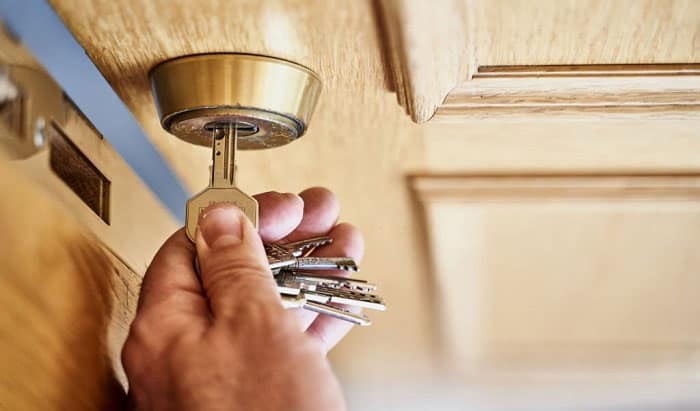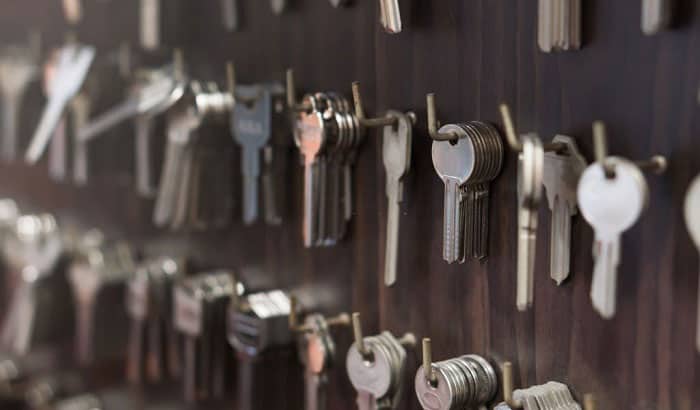Are you wondering how to make a bump key? You can create a bump key using a code cutting machine or a simple triangular file. It helps open the lock of your house in case you lose your original key. Although a bump key is specially designed, it is possible to make one.
If this is your first time making a bump key, you don’t have to worry. Through this tutorial, we will guide you from the beginning to the end. You only have to follow the steps correctly and prepare the needed tools.
Table of Contents
What to Prepare
- A blank key – There are different blank keys: bit, barrel, cylinder, and flat. The blank key you need must fit your lock. If you don’t have a blank key, you can use a spare key as an alternative.
- Triangular file – A triangular file three-sided form is required to trim and shave sides.
- Bench vise – Choose a 4 to 5-inch bench vise to hold small objects like a key.
- Marker – The best type of marker that you can use for a metal object like a key is a paint marker with a polyester tip. A thinner or a solvent can only remove the mark.
- A pair of safety glasses
- Code cutting machine – When choosing a suitable machine, ensure that it is easy to use, even for beginners like you. It must also include a code card, a cutter blade, and a jaw.
Method 1: Using a Code Cutting Machine
Step 1: Prepare the cutting machine
A code-cutting machine is the easiest method to create a bump key set. But, first, ensure that the device has the right size of jaw and cutter blade.
You will need to have a code card so that you won’t have to measure manually. Please insert the code card under the lens of the machine, ensuring that it is under the needles.
Position the space needle on the line on the first space to prepare the key for the first cut.
Note: Don’t forget to wear protective eyewear before proceeding to the next step.
Step 2: Place the blank key into the jaw
If you are unsure what measurements are needed to make a bump key, you can use an actual size bump key template.
If your blank key is Schlage or Kwikset, loosen the wing nut.
Place the key at the back of the jaw, then push the wing nut against the shoulder gauge. Tighten the wing nut.
For car keys like Ford or GM, insert the blank key directly at the gauge. Once done, don’t forget to tighten the wing nut.
Step 3: Cut the key
Move the carriage away from the cutter by turning the space knob. Turn the machine. Once it is on, turn the depth knob into the proper depth.
Move to the next position by turning the space knob and rotating the depth knob. Repeat this procedure until you make all the cuts.
Next, remove the key from the machine. To remove the burrs from the key, place it on the soft deburring brush, then turn the device off. Try if the bump key is working.
You can make adjustments if the key is not working as it should. Aside from a house key, you can also make a bump key for a car using a code-cutting machine.
Method 2: Using Triangular File
Step 1: Prepare the blank key and the guide key
Before making a bump key, prepare the blank and the guide key. If you own a Schlage lock, you will need a Schlage key. If it’s a Kwikset lock, a Kwikset key is required.
You don’t need to have the original key since it will only serve as a guide. However, if you fail to acquire a guide key, a shaved key template is available online.
Once you have the keys, put the guide key at the top of your blank key. Using a marker, trace the peaks and cuts of the guide key upon the blank key.
The maximum depth of the cut must not go beyond the track of the key. The track is the lengthwise indentation located at the middle part of the key.
Step 2: Place the blank key to the bench vise
After marking the cuts and peaks on the blank key, place it into the bench vise. The top part of the blank key must be exposed, showing the cuts and peaks.
Make a rough outline at the bump key using a flat file. The outline does not need to be perfect since you will have ample time to smoothen the key later.
If you don’t have a bench vise, you need to look for a tool or a device that can hold the bump key firmly.
Step 3: File the bump key
Line up the triangular file for the first cut, then file it down. Do the same procedure for the subsequent cuts. It only takes less than a minute to create each cut.
Once you are done, check if the DIY bump key has the same number of cuts as the original key.
The homemade bump key has steeper peaks than the original key. The key will get stuck when inserted inside the lock with these peaks.
File the peaks of the bump key that are at least 4 to 5 millimeters above the cuts. In addition, the peaks should all have the same heights.
Step 4: Make adjustments to the bump key
To make the universal bump key useful, make adjustments. Make the peaks even by filing them down. The cuts must have the same space as that of the original key.
Plus, you need to remove the shoulder of the key by filing it down. It is the small chunk located before the first peak, stopping you from inserting the key all the way to the lock.
Aside from the key’s shoulder, you also need to remove a small portion of the tip of the lock. Although this is optional, it will quickly help you fit the key into the lock.
File down at least ¼ to ½ millimeters of the key’s tip. Then, for better recoil, you can place a rubber spacer where the shoulder part of the key is initially located.
Step 5: Try if the bump key is working
To make further adjustments, try if the bump key is working. If the bump key has no rubber spacer, leave one peak exposed while the remaining part of the key is inside.
If you are using a rubber spacer, you only have to insert the key. You must hear a clicking sound after you have inserted the key. If there’s none, fidget the key.
Turn the key clockwise, then hit it with a hammer. This may take several tries before the lock opens successfully. Make adjustments to the key if the lock fails to open.
You can also make a bump key out of a paperclip. However, this bump key only works on low-quality and commercial-grade locks.
Helpful Tips to Make a Bump Key
- Your bump key’s maximum depth must not go beyond the maximum depth of the original key. The track on your key serves as a good guide.
- Prevent having rough edges on the bump key. It can cause the key to get stuck inside the lock. File it if needed to get rid of rough edges.
- It takes practice and finesse to perfect bumping a lock. If you don’t apply enough pressure and you are not quick enough, the pins will slide down before you can even turn the cylinder.
- Some states prohibit owning a bump key, like in Tennessee and Illinois. In both states, you need to be a locksmith, so you will be permitted to own one.
- If you want to improve the performance of your bump key, you can use a rubber spacer, also known as a castration ring.
Conclusion
Do you find our tutorial on how to make a bump key useful? It may sound complicated, but the truth is, the steps are pretty straightforward. Whatever method you use, it will be helpful to learn to make a bump key, especially if you need a spare key for your house or your car.
If you think that this article is helpful, we would appreciate it if you would share this with your friends. Thank you for reading!

I am the last member to join Revolar and might be just the luckiest to work with dedicated people like Teddy and John. Our team has established a process where my only job is writing the best content to deliver incredible ideas and guides.





